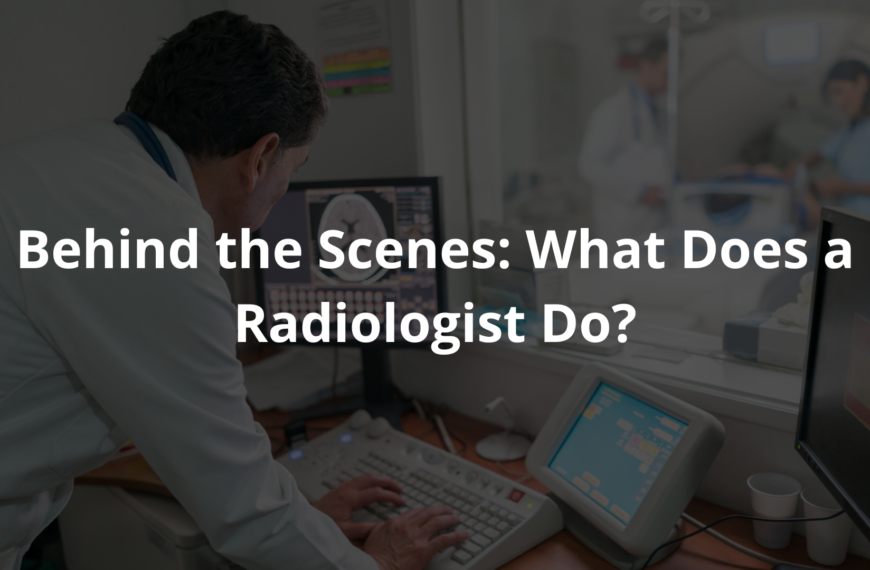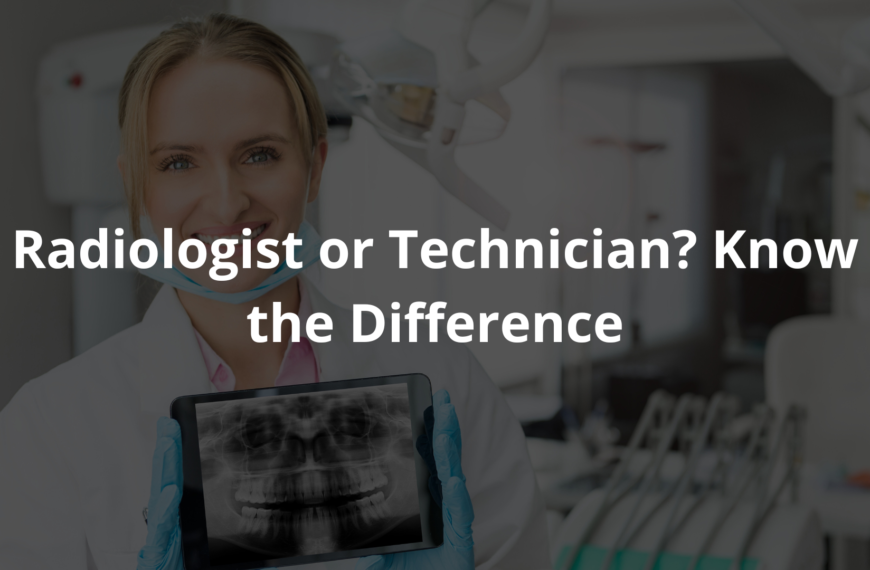Interpreting results in healthcare is like solving a puzzle. Learn how radiologists read X-rays, CTs, and MRIs to uncover what’s going on inside the body.
Interpreting results in healthcare is like solving a puzzle. Each piece, like X-rays or MRIs, helps radiologists see the full picture of what’s happening inside our bodies. These medical experts analyse images carefully to identify problems and suggest treatments. Their work is crucial to patient care, ensuring people receive the right diagnoses and therapies.
Understanding these images can mean the difference between health and illness. So, next time you hear about radiologists, remember, they’re the detectives in medicine, piecing together vital information every day. Keep reading to learn more about their essential role in healthcare!
Key Takeaways
- Radiologists analyze medical images to identify diseases or injuries.
- They collaborate with other healthcare professionals for better patient care.
- Accurate interpretation of results can save lives, especially in cancer detection.
The Role of Radiologists
Radiologists are a crucial part of Australia’s healthcare system(1). They are like detectives who use medical images—such as X-rays, CT scans, MRIs, and ultrasounds—to uncover what’s happening inside a patient’s body. When doctors are uncertain about a diagnosis, they turn to radiologists for help. These images provide valuable insights that help guide medical decisions and treatment plans.
Radiologists play an essential role in early disease detection, which can make a huge difference in treatment outcomes. For instance, radiologists are the ones who examine mammograms to detect early signs of breast cancer. Early detection of cancer often leads to better treatment options and higher survival rates.
Radiologists stay up-to-date with the latest techniques and machines to ensure they provide the best care possible. This continuous learning is essential, as it helps them keep pace with the rapid changes in medical technology and improve patient outcomes.
Working with Healthcare Teams

Radiologists are not just isolated in dark rooms, studying images all day. They play a crucial role in a team of healthcare professionals. By carefully examining medical images, radiologists help guide doctors toward the right diagnosis. They don’t just look at the scans—they help connect the dots, providing valuable information that helps the whole team understand the patient’s condition. This collaboration is essential in ensuring that the patient receives the best care possible.
Healthcare is not a solo effort—it’s all about teamwork. Radiologists are an important part of this team, working alongside doctors, surgeons, and specialists to help patients. Once they’ve studied the scans and identified any concerns, they share their insights with the rest of the team. This helps everyone involved make informed decisions about the patient’s care.
Their insights help guide decision-making, and their ability to communicate clearly ensures that everyone is on the same page. If you think about it, every healthcare team needs its members to share information effectively. It’s not just about the radiologist looking at an image—it’s about what happens next, when they discuss their findings with the doctors, surgeons, and specialists.
The Process of Interpretation
Source: Geeky Medics
Radiologists are trained to see what others may miss. They know exactly what to look for, whether it’s something obvious or something more subtle. The process requires careful thought and a deep understanding of anatomy and pathology. Every image is like a puzzle, and the radiologist’s job is to put the pieces together to make sure patients get the right care.
Radiologists don’t just look at medical images—they think about what the images mean. They are like detectives, piecing together the clues to form a complete picture of a patient’s health. Every scan is an opportunity to find something that could make a real difference in someone’s life.
They don’t just look at what’s in front of them—they ask, “What does this mean?” and “What should happen next?” It’s this critical thinking that makes them such an important part of the healthcare team. When it comes to medical scans, radiologists are there to help doctors make the best decisions for their patients. Their job may seem simple—looking at pictures—but in reality, it’s about finding answers that could change someone’s life.
Continuous Education and Training
Radiologists, much like other healthcare professionals, can’t stop learning once they finish their formal education. They must keep updating their skills throughout their careers to stay at the top of their game. This includes attending workshops, going to medical conferences, and participating in ongoing training sessions(2).
The field of radiology is constantly evolving with new imaging techniques, tools, and research. These learning opportunities help radiologists understand and use the latest technologies to provide the best care for patients. Staying updated ensures that radiologists can spot potential issues in scans with greater accuracy and confidence, which is key to improving patient outcomes.
On the other hand, new technology comes with its own challenges. Radiologists must learn to use these advanced machines properly, which requires ongoing training. Some imaging devices even use artificial intelligence (AI) to help identify problems, but the radiologist’s expertise is still needed to double-check the results. It’s a balance of technology and human expertise.
Patient Interaction
Radiologists might seem like they’re always behind the scenes, but sometimes they step forward to meet the people they’re helping. When a patient comes in for a scan, there’s this chance for the radiologist to make things feel a little less scary. They might explain what’s about to happen or give a small clue about what the images show.
Picture this: a patient sitting in a quiet, cold room, waiting. They’re nervous, maybe even scared. That’s when a radiologist can step in and change the mood. They might sit down and say, “We’ll take care of everything. You’re in good hands.” It’s not much, but it can mean a lot. It’s like a small light in a dark moment.
People feel better when they understand what’s happening. A kind word or a quick chat can make a big difference. Radiologists, even though they mostly work with machines and pictures, play a part in helping patients feel safe and cared for. So, if you ever need a scan, don’t be surprised if a radiologist takes a moment to make sure you’re okay. It’s a small thing, but it matters.
The Importance of Accurate Interpretation
When a radiologist looks at a scan, they’re doing much more than just reviewing pictures. Their job involves making decisions that can have a significant impact on a person’s health and life. If a radiologist makes a mistake, it’s not just an error on paper—it could affect someone’s future, their family, and their well-being.
The pressure is high because every detail in a scan matters. Radiologists are responsible for spotting issues that could indicate serious health conditions, and these findings help doctors make life-changing decisions. If they miss something important, the consequences could be severe, but if they catch it early, it can make all the difference in the outcome of treatment.
It’s a big responsibility, but radiologists are trained to handle it with precision and care, always ensuring that they do their part in the healthcare team.
Challenges in Interpretation
Radiologists have a demanding job, and it’s not one that gets much attention. They work in rooms that are often dimly lit, staring at computer screens filled with images of the insides of people’s bodies—bones, organs, blood vessels, and more. Their role is to determine what looks normal and what looks abnormal, but this isn’t always as easy as it sounds.
Radiologists are under constant pressure to stay sharp(3). A single mistake could lead to serious consequences for the patient. That’s why they must focus on even the tiniest details, even when they’ve been working long hours. The job requires extreme precision, as even the smallest oversight could result in an incorrect diagnosis.
Radiologists need to be able to spot abnormalities in scans and decide whether they require further investigation or treatment. It’s a skill that requires years of training and experience, and their role is crucial in ensuring patients receive the right care at the right time.
Though their work may be behind the scenes, radiologists play an essential role in diagnosing medical conditions and helping patients get the treatment they need.
Impact on Patient Outcomes
This job requires great attention to detail, because missing something on a scan could delay treatment, which can be harmful. Radiologists must be able to spot even the smallest changes in the images. For example, a small fracture, a tumour, or an infection might not be obvious to everyone, but to a trained radiologist, these signs are key to figuring out what’s happening inside the body. Their expertise is essential for guiding doctors to the right treatment.
One of the most important aspects of a radiologist’s work is early detection, especially when it comes to serious conditions like cancer. If a radiologist spots something unusual on a scan early, it can make a huge difference for the patient. Early detection often means there are more treatment options available, and the chances of recovery are much higher.
Take cancer as an example. If a radiologist finds signs of cancer in its early stages, the patient can start treatment right away, which can improve their chances of beating the disease. This is why radiologists are considered a key part of the healthcare team: their ability to identify problems early helps doctors plan the best course of action for treatment. Without their expertise, important conditions could go undetected until it’s too late.
FAQ
What are akl ea and how are they used in interpreting results?
Absolute risk (AKL) and relative risk (EA) are important concepts in interpreting medical study results. Absolute risk shows the actual chance of an event happening, while relative risk compares the chance between two groups. Understanding both absolute and relative risk can help you grasp the true impact of a treatment or risk factor.
How are GRADE (GRADEing of Recommendations, Assessment, Development and Evaluations) and Gordon H. Guyatt used to assess the quality of evidence?
GRADE and Gordon H. Guyatt are methods developed by experts to evaluate the strength and reliability of research evidence. They consider factors like study design, consistency of results, and potential biases. Knowing the quality of evidence can inform how much you should trust the findings when making decisions about your health.
What is a ROC (Receiver Operating Characteristic) curve and how does it relate to odds ratio and risk factor?
A ROC curve is a graph that shows the trade-off between true positives and false positives for a diagnostic test. It’s used to determine the best cut-off value. Odds ratio and risk factor are statistics that indicate how much a certain factor increases the chance of an outcome. Together, these tools can help interpret the accuracy and relevance of test results.
How are odds ratios, Higgins I-squared (Higgins JPT), and high quality evidence used to assess study findings?
Odds ratios quantify the relationship between an exposure and an outcome. Higgins I-squared is a measure of statistical inconsistency across studies. High quality evidence, as assessed by experts, suggests the findings are more reliable. Considering these elements together can paint a clearer picture of how trustworthy the study results are.
What is the number needed to treat (NNT) and how does it relate to data analysis and absolute risk?
The number needed to treat (NNT) is a statistic that shows how many people need to receive a treatment for one additional person to benefit. It’s calculated from absolute risk, which is the actual chance of an outcome. Understanding both the NNT and absolute risk can help interpret the practical significance of study results.
How do Paul Glasziou, public health, and change scores inform the interpretation of results?
Paul Glasziou is an expert who has contributed to methods for evaluating medical evidence. Public health perspective considers population-level impacts. Change scores measure the difference before and after an intervention. Considering these angles can provide a more comprehensive understanding of what study results mean for real-world health and decision making.
When should relative risk, working groups, and natural units be considered in interpreting results?
Relative risk compares the chances between two groups, which can be more intuitive than absolute numbers. Working groups of experts develop guidelines on interpreting evidence. Natural units, like blood pressure numbers, can be easier to understand than abstract statistics. Looking at results through these lenses can make the implications clearer for practical use.
What role do evidence-based medicine, numbers needed to treat, and risk reduction play in drawing conclusions from study findings?
Evidence-based medicine uses the best available research to guide clinical practice. Numbers needed to treat statistics indicate the practical impact of an intervention. Risk reduction shows how much a treatment can lower the chance of an outcome. Considering these factors together can help determine the real-world significance and usefulness of study findings.
Conclusion
Radiologists are important for finding out what’s wrong with patients. They work with doctors and nurses to help everyone understand a person’s health. Radiologists need to keep learning, so they can read images correctly. This is very important, especially for sick patients who need fast help. As technology gets better, radiologists will keep playing a key part in making sure patients get the best care. Their work truly makes a difference in saving lives.
References
- https://www.sciencedirect.com/science/article/pii/S1532046405000729
- https://www.myesr.org/app/uploads/2023/08/ESR-European-Training-Curriculum-Level-I-II-2020-1.pdf
- https://pmc.ncbi.nlm.nih.gov/articles/PMC8364739/




